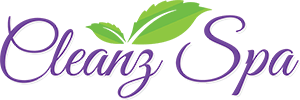A cosmetic neuromodulator is a commercial product—usually Botox®, Dysport®, or Xeomin®—used via subcutaneous injection to minimize wrinkles, frown lines, crow’s feet, and other common signs of aging skin.
During the administration of a neuromodulator, a minuscule amount of the drug is injected and causes the surrounding muscles to relax. That relaxation is what brings about the smoothed-out appearance of the skin.
Natural-looking, fast-acting, and long-lasting Dysport is specifically intended to deal with the glabellar lines, the official, medical name for one of our least favorite subjects—those parallel lines between our eyes that resemble the dreaded number “11.” Dysport works by reducing specific muscle activity and contractions and requires only five small injections. One of Dysport’s main benefits is that it’s long-lasting—treatment results may last as long as 5 months. Due to the methodology of Dysport’s administration—the “five points” injection—results are also hailed as incredibly natural-looking.
Xeomin also focuses its efforts on significant glabellar lines and includes the same active ingredient as Botox (the botulinum toxin that blocks nerve activity in the muscles, causing a temporary reduction in muscle activity). So, if Xeomin is essentially the same as Botox, why do we need it? Xeomin touts itself as a “purified version” of the bacterium that makes Botox work, and it’s a popular alternative for anyone who may have developed a resistance to other neuromodulators. The tradeoff, however, maybe that it takes a longer time to work compared to the other injectables.
Since the rise of neuromodulators in the arena of cosmetic medicine, several “off-label” uses have also been discovered. Botox, for example, has the potential to alleviate both TMJ and migraine symptoms, while Xeomin-use has moved beyond just the glabellar lines to include facial lines of all kinds. Both Dysport and Xeomin help treat cervical dystonia, a potentially painful condition that can cause spasms in the neck and affect people of all ages, including children.
Want Professional Grade Supplements?
![]()

